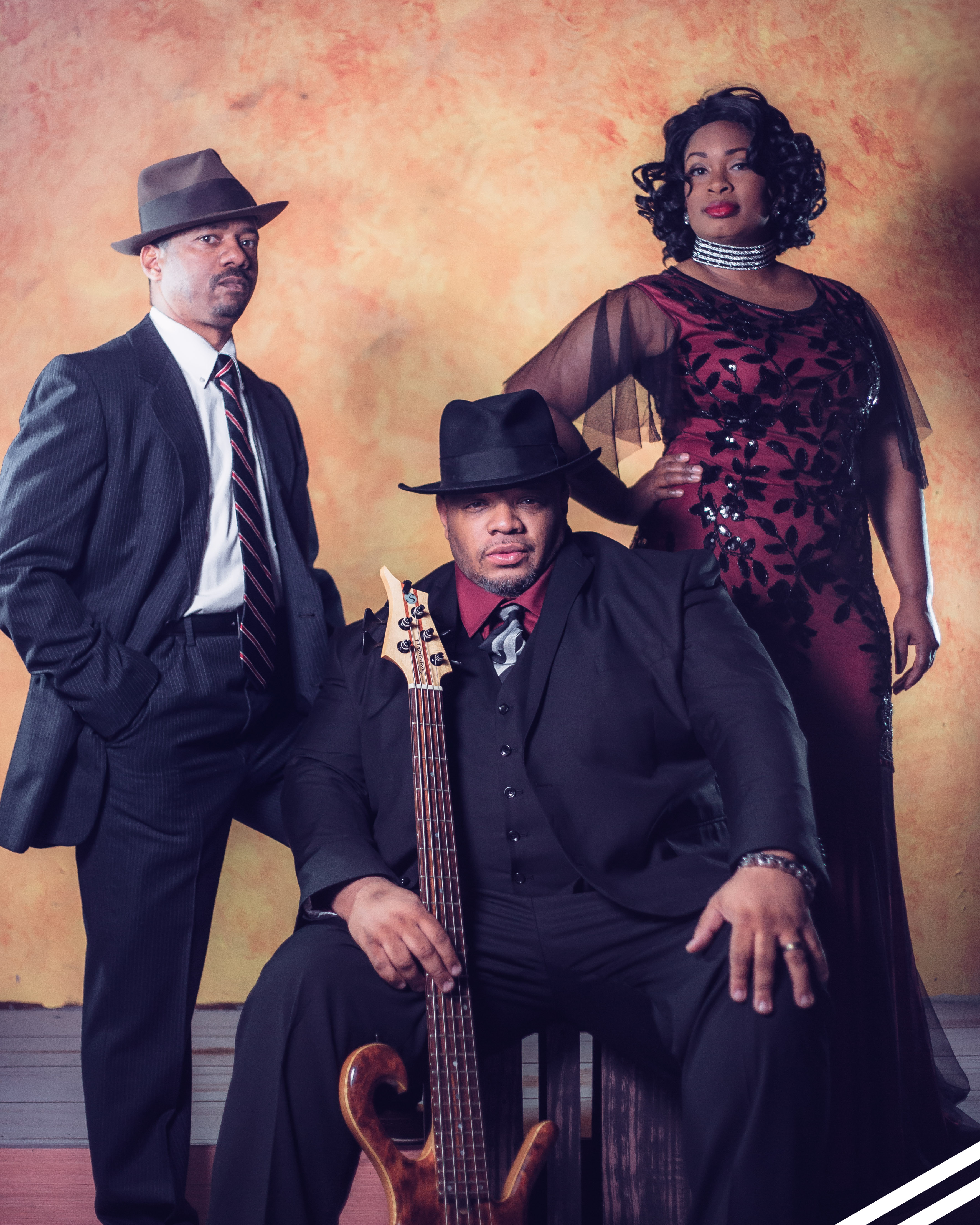It Ain’t Nothin’ But the Blues at Jubilee Theatre
Originally making its Broadway run 20 years, “It Ain’t Nothin’ But the Blues” tells the story of the cultural force which has acted as the foundation of American music as it follows its progenitors’ journey from African tribal chants into the essence of our culture. Downtown Fort Worth’s Jubilee Theatre presents the show imagined in a Delta Roadhouse, directed by TCU Theatre faculty member, Robert Michael James, who alongside Musical Director Steven A. Taylor put together a smoking band to powerfully honor the various shades of blues music. With a rich background as an actor, director, and choreographer, James’ grasp of musical and theatrical history is dizzying. His Jubilee debut came with the sensational summer 2016 production of “Smokey Joe’s Café,” the groundbreaking musical about the advent of rock ‘n roll.

photo credit: Ace Anderson, courtesy of Jubilee Theatre
The two-act show runs through April 15th and depicts how cultures adapt to the extreme miseries and tragedies foisted upon them by waves of oppression over the course of generations. Of note is how call-and-response can be found in slave chants, prison songs, and even spirituals, all of which were at one point or another considered subversive forms of expression requiring those who performed them to bury meaning in metaphors and coded language. Technical Director Van Williams’ projections throughout the production serve to give deeper resonance to the long, often painful, legacy of the music and the struggle from which it grew.
As the band was coming together, Taylor and James struggled to find an available guitar player who could also play banjo until they auditioned Fort Worth’s otherworldly multi-instrumentalist Darrin Kobetich, who can apparently play any stringed instrument. James recalls, “Darrin showed up with a case shaped like a coffin, and I knew he was our guy.”
Having previously contributed to several shows at Hip Pocket Theatre, Kobetich is accomplished in the John Fahey/Leo Kotke school of fingerpicking, in addition to having the credentials of a master slide player. As inventive as he is industrious, Kobetich also brings out his Dobro resonator on a couple of tunes like Robert Johnson’s “Cross Road Blues.” With an ear tuned by a range of sounds, from blues to metal and beyond, early rock bands like Led Zeppelin, Jimi Hendrix, and Cream were important influences, he adds. “They introduced me to the blues and led me to explore its roots. This show is cool because you get to see how all the musical dots connect.”

photo credit: Ace Anderson, courtesy of Jubilee Theatre
Incidentally, Kobetich has recently been on his own musical journey through the various regional approaches to the oud – the lute-like instrument heard throughout many forms of Middle Eastern and North African music. Detailing the difference in styles between places like Syria and Northern Africa, he admits, “I might go crazy if I had to play one style.” Watching Kobetich in action, one might presume he could lose it if he could only play one instrument.
The show condenses old time music from the Mississippi Delta to Chicago, interweaving black history through music. From juju to mojo and beyond, “It Ain’t Nothin’ But the Blues” includes beloved songs audiences might not typically associate with the blues but are part of the greater story of its inclusion in the American fabric, songs like “Walking After Midnight,” “My Home Across the Blue Ridge Mountains,” and “‘T’ for Texas.” To manage the range of more than thirty songs, a uniquely talented band was required. After catching the four-piece group sharing a corner of the stage with the eight performers, Theatre Jones’ Jan Farrington was inspired to give them a resounding endorsement. “They’re so good that after a few songs, something odd may happen: you’ll get distracted by the band.”
Starting with the sounds of the Yoruba people of southwestern Nigeria, “It Ain’t Nothin’ But the Blues” charts the course of the African Diaspora in America, which eventually flowed into and intermingled with channels of European servants, as Robert Michael James illustrates: “For example, Jimmie Rodgers learned to yodel from black railroad employees.” Under James’ direction, the progress of the story is balanced by an underlying sense of freedom for the players to get the right feel.

photo credit: Ace Anderson, courtesy of Jubilee Theatre
Blues favorites like “The Thrill is Gone” and “I Put a Spell on You” trace their lineage to a saga of dislocation, eventually changing the face of our country during the Great Migration. As millions of African-Americans left the South for greater opportunities, the story continued to change and turned from simply survival to a fight for equal rights. As it always had been, music was again used as a weapon against the forces of oppression; for example when Billie Holiday sang “Strange Fruit” so hauntingly in her 1939 recording, she picked up Ida B. Wells’ fight against the barbaric practice of lynching. The vitality underlying these songs is just as important to our national identity as the spirituals that once helped people survive the inhumane conditions of slavery.
“It Ain’t Nothin’ But the Blues” plays at the Jubilee Theatre (506 Main Street) Thursdays through Sundays through April 15. Purchase tickets here.
 An Austin native, Lyle Brooks relocated to Fort Worth in order to immerse himself in the burgeoning music scene and the city’s rich cultural history, which has allowed him to cover everything from Free Jazz to folk singers. He’s collaborated as a ghostwriter on projects focusing on Health Optimization, Roman Lawyers, and an assortment of intriguing subjects requiring his research.
An Austin native, Lyle Brooks relocated to Fort Worth in order to immerse himself in the burgeoning music scene and the city’s rich cultural history, which has allowed him to cover everything from Free Jazz to folk singers. He’s collaborated as a ghostwriter on projects focusing on Health Optimization, Roman Lawyers, and an assortment of intriguing subjects requiring his research.


 Sign in
Sign in

